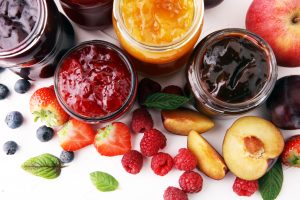Sunday hunting is prohibited on all State Forest property More Info
Adopted in 2006, the On-Farm Home Processing of Non-Potentially Hazardous Foods regulations were established to allow farm families the ability to process non-potentially hazardous foods in their on-farm home kitchens for sale to the public at farmers’ markets recognized by the Department, on their farm or at a roadside stand on or near their farm.
Members of the farm family who will be producing non-potentially hazardous items must attend training identified by the Delaware Department of Agriculture to learn how to
 identify potentially hazardous and non-potentially hazardous foods; understand food-borne pathogens and ways to control them; reduce the risk of food-borne illness; evaluate their plan for controlling potential microbial problems; and understand state regulations on farm-produced, non-potentially hazardous food items. Once the participants take the training and pass a written test, the Food Products Inspection staff conducts an on-farm kitchen inspection. If the kitchen passes inspection, food will be allowed to be produced in accordance with Delaware regulations.
identify potentially hazardous and non-potentially hazardous foods; understand food-borne pathogens and ways to control them; reduce the risk of food-borne illness; evaluate their plan for controlling potential microbial problems; and understand state regulations on farm-produced, non-potentially hazardous food items. Once the participants take the training and pass a written test, the Food Products Inspection staff conducts an on-farm kitchen inspection. If the kitchen passes inspection, food will be allowed to be produced in accordance with Delaware regulations.
In an on-farm kitchen, the person on the farm producing food items that are non-potentially hazardous foods, are limited to:
While operating an on-farm kitchen, the person responsible may not process potentially hazardous foods for commercial sale such as:
Labeling of product made is required by law and is extremely important for trace backs in case of food-borne illnesses and to allow the consumer to review the ingredients in case of any food-related concerns that may affect their well-being. Compliance inspectors within the Delaware Department of Agriculture check for labels and can require products to be removed from sale if the labeling is not done correctly. In order for a product to be considered properly labeled it must include the following:
Food products identified as non-potentially hazardous in these regulations and not labeled in accordance with subsection (9.1) of the regulations are deemed misbranded.
Food products identified above as non-potentially hazardous foods and are produced, processed, and labeled in accordance with the On-Farm Home Processing of Non-Potentially Hazardous Foods regulations are acceptable food products that may only be offered for sale by farmers’ markets, roadside produce stands, or the processor’s farm.
Before an on-farm kitchen can apply and receive a permit, the farm owner must:
Related Topics: apple cider, baked breads, cakes, candy, caramel corn, cheese-filled baked goods, cookies, cream pie, cured foods, custard pie, dried fruit, dried vegetables, farmers' markets, fermented foods, fruit butters, fruit pies, herbs, honey, jams, jellies, juice, low-acid canned foods, maple syrup, marmalades, meat pie, muffins, non-potentially hazardous foods, on-farm kitchen, peanut brittle, pickled products, popcorn, potentially hazardous foods, preserves, pumpkin pie, relishes, roasted nuts, sauces, seafood, sorghum, spices